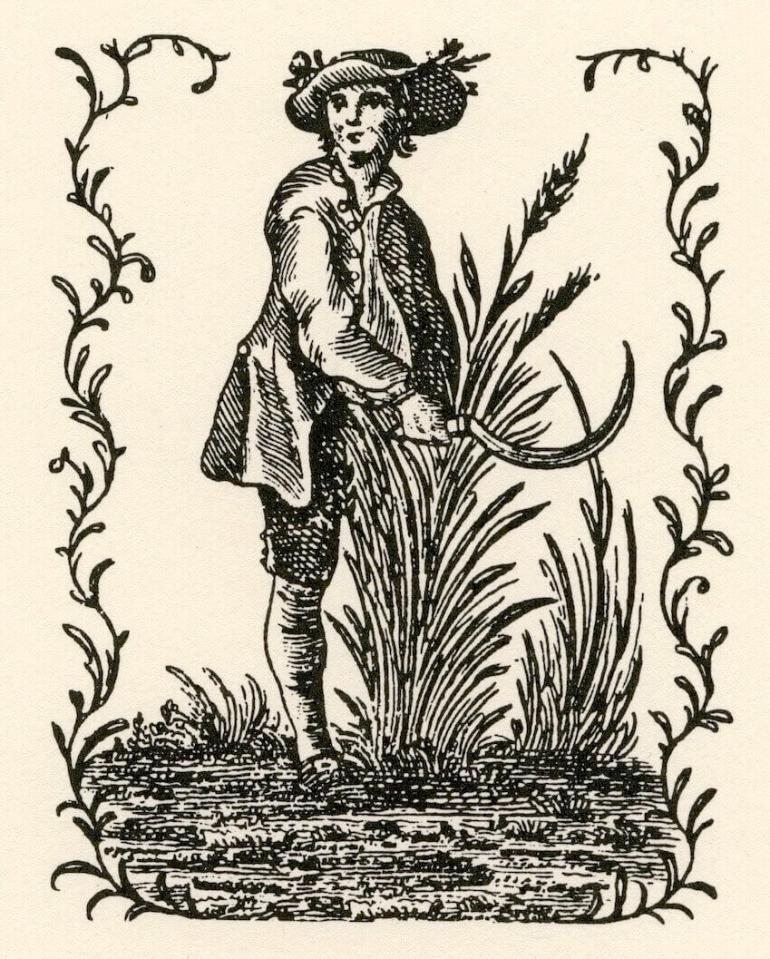From the 1709 French book The Theory and Practice of Gardening, containing plans for building terraced, falling gardens, bowling greens, and many other elements of pleasure gardens. Courtesy of the Metropolitan Museum of Art.

Falling Gardens
Mount Clare featured exquisite gardens with ornamental and natural woodland plantings that showcased the Carroll’s wealth and social standing. On the river side of Mount Clare (which today faces Washington Blvd.), there was a tightly manicured turf lawn known as a bowling green.
From this platform, the falling gardens cascaded down, offering a sweeping view of the river, which was only a mile away. A series of five separate terraces descended downwards, with grass ramps connecting each level. Various flowers and shrubs decorated each terrace.
Gardening activity intensified at Mount Clare after the Barrister married Margaret Tilghman Carroll. She became a noted horticulturist over the course of her lifetime and offered technical advice to other avid gardeners, including President George Washington.
Gardening Staff
Initially, the Carrolls hired indentured gardeners from England, engaging at least one transported convict who later sought his freedom from them. These European gardeners were assisted by a team of between 10 and 12 enslaved men who handled all the planting, weeding, repotting, and other grounds keeping. After the revolution, the Carrolls began relying on enslaved men to fill the main gardener role. When Margaret died in 1817, her head gardener was Richard Garrett, a 54-year-old enslaved man.
"It is a large and elegant House. It stands fronting looking down the River, into the Harbour. It is one Mile from the Water. There is a most beautiful Walk from the House down to the Water. There is a descent, not far from the house. You have a fine Garden - then you descend a few Steps and have another fine Garden - you go down a few more and have another. It is now the dead of Winter, no Verdure, or Bloom to be seen, but in the Spring, Summer, and Fall this Scaene (sic) must be very pretty."
John Adams, in Baltimore for a session of the Continental Congress, February, 1777.
Acclaimed Landscape
The Mount Clare gardens were renowned for their beauty and at least two descriptions of them have survived. The entire estate included: tobacco and wheat cropland; cherry, plum, apple, and pear orchards; a vineyard; a kitchen garden; and two heated greenhouses. Charles Carroll, Barrister’s letters detail the seeds and saplings that he ordered from England.
"Took a great deal of pleasure in looking at the Bowling Green & also at the…Very large Falling Garden… there is a Green House with a good many Orange & Lemon Trees just ready to bear…the House…stands upon a very High Hill & has a fine view of the Petapsico(sic) River. You step out of the Door into the Bowlg (sic) Green from which the Garden Falls & when You stand on the Top if it there is such a Uniformity of Each side as the whole Plantn(sic) seems be laid out like a Garden…there is also a Handsome Court Yard on the other side of the House."
Mary Amblin, a visitor to Mount Clare, 1770.



